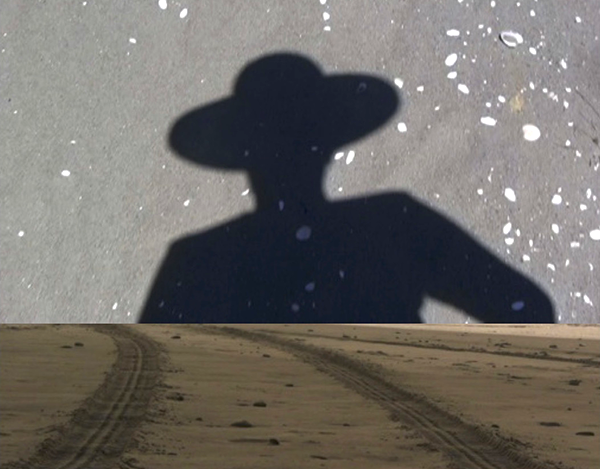October 13, 2015
By Rachel Rogol

Ecology. Resistance fighters. A case study by Sigmund Freud. These are the underlying themes of Dora, an original performance about two people who meet and lose one another repeatedly against continually shifting landscapes of history and memory.
Written and performed by Wendy Woodson, Amherst's Roger C. Holden 1919 Professor of Theater and Dance, Dora simultaneously explores the relationship between its two characters and the many possible connections between images and human memory. "Dora is not a naturalistic or realistic play," Woodson says, "but rather a series of encounters."
A choreographer, director, writer and video artist, Woodson explains Dora as a 70-minute play with "choreographic sensibility" and "poetic language." Though the title of Woodson's play is the same as Freud's case study "Dora" (the pseudonym he gave to a patient whom he diagnosed with hysteria), Woodson says, "I wasn't intentionally thinking about Freud's 'Dora' when I began to call my play Dora, but of course once that name was put on the title page, I needed to examine Freud’s case again."
Woodson says some images and small details from Freud's case filtered into the script. But much of it is also based on time spent in Australia, where Woodson lived in 2010–11 and worked on a series of pieces about migration and immigration. "I met many refugees who had been displaced, escaping war-torn environments, never able to return home," Woodson says. "Simultaneously, I was seeing some of Australia's incredible outback landscapes and became very interested in the different ecological systems that were in evidence there. With these threads I started working on texts for what has become Dora."
Working intermittently on the play until fall 2014, Woodson then turned to Peter Schmitz, visiting resident artist of theater and dance, for help experimenting with the nearly completed script. They performed Dora as a work-in-progress at Amherst in November, and then took the performance to Australia, where it premiered at Melbourne’s La Mama Theatre in June 2015.
"Each performance reveals a different layer or perspective in the piece," Woodson says. The workshop at Amherst allowed her to flesh out the choreography. In Australia, she focused on the depth of each character and the movement between scenes.
Woodson now considers the script for Dora to be complete, and looks forward to showing it again at Amherst. "I hope that people will go on their own journeys watching the piece," she says, "engaging with us and also with their own memories and images."